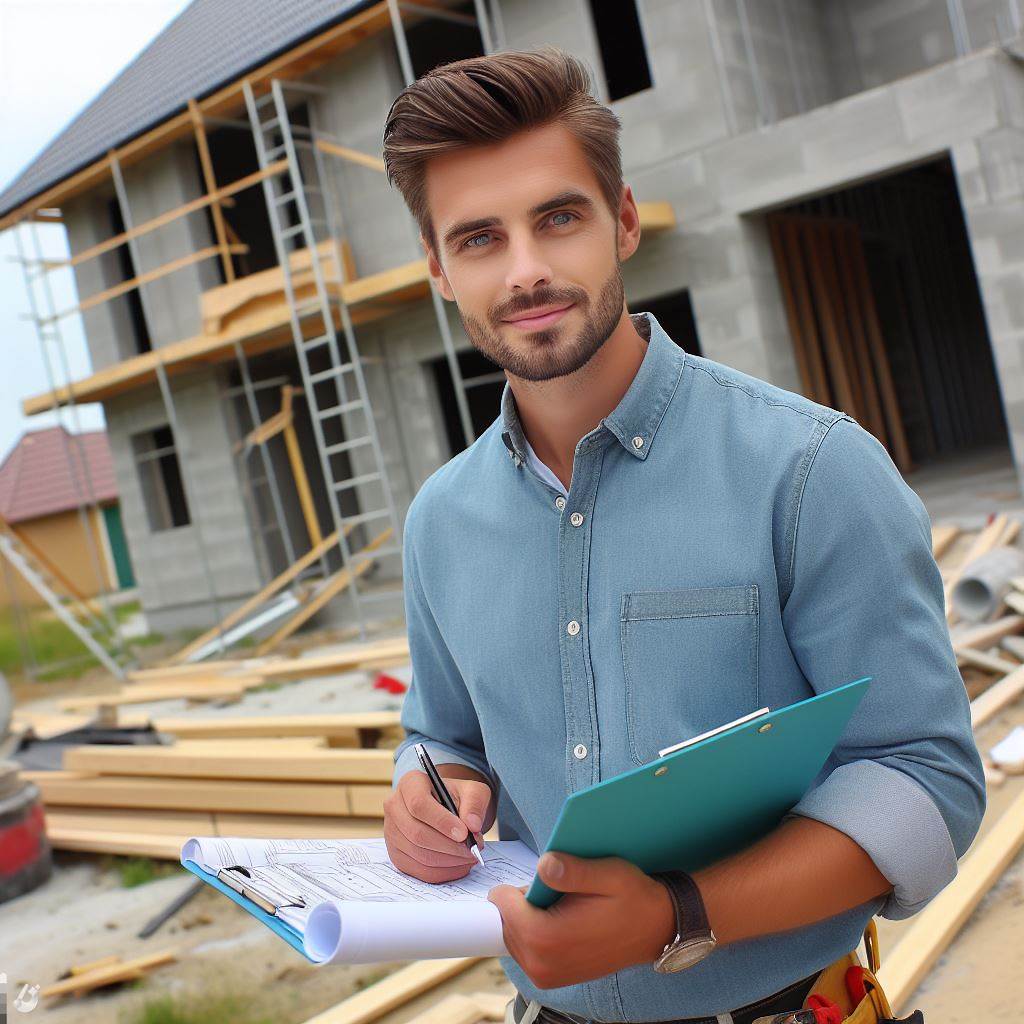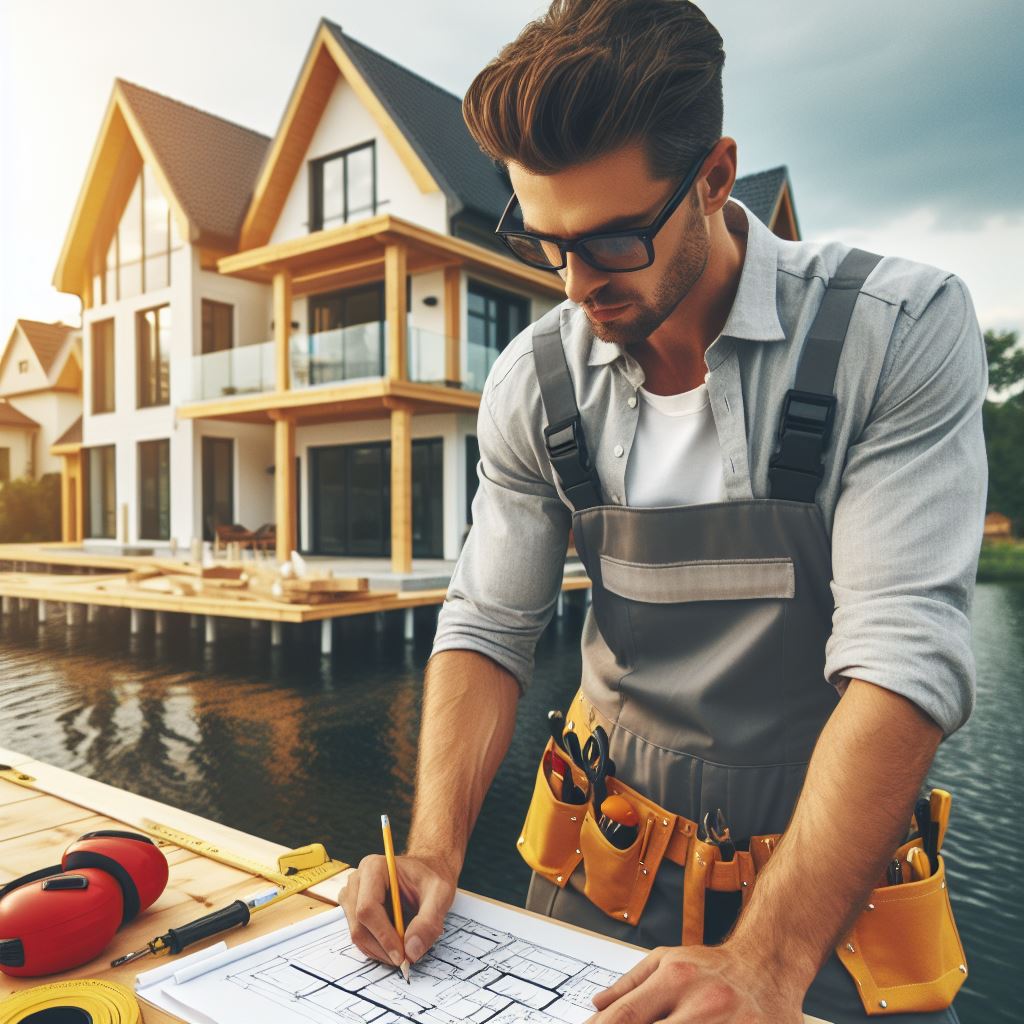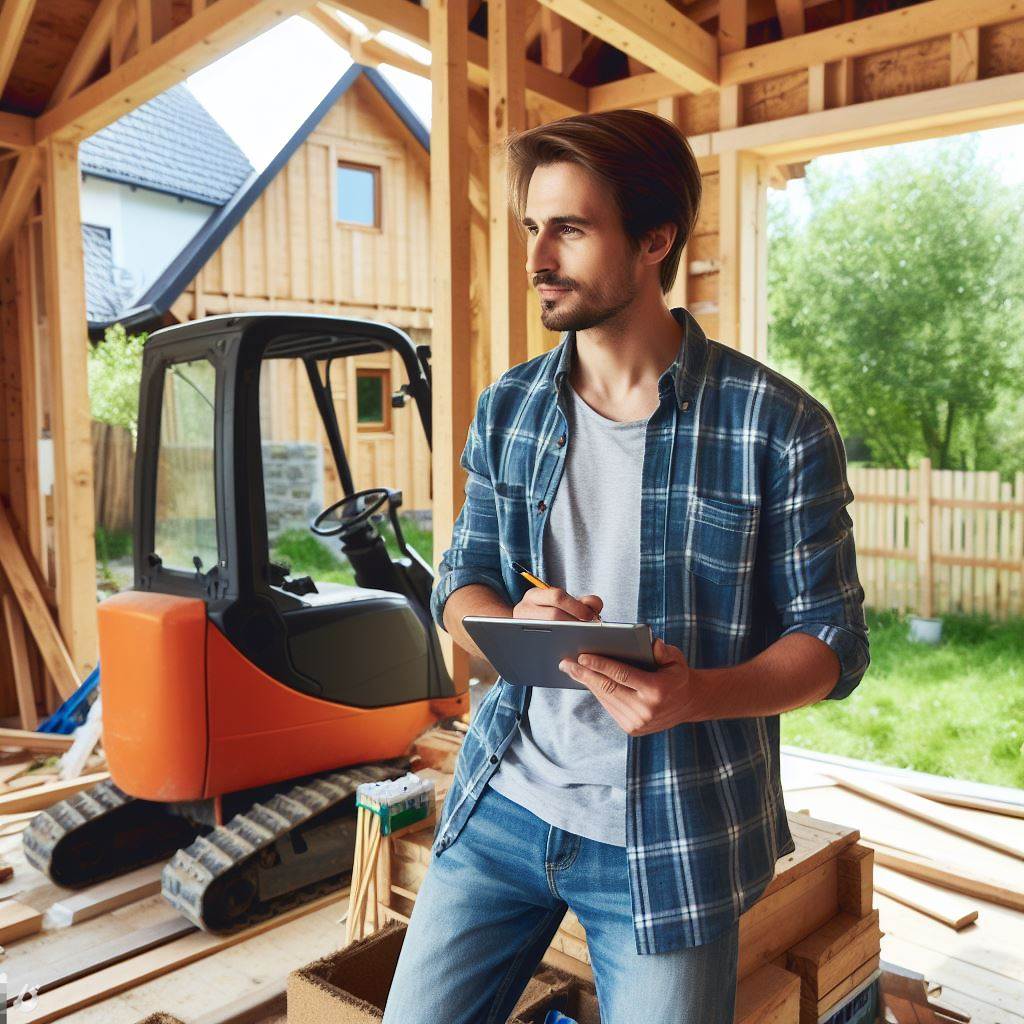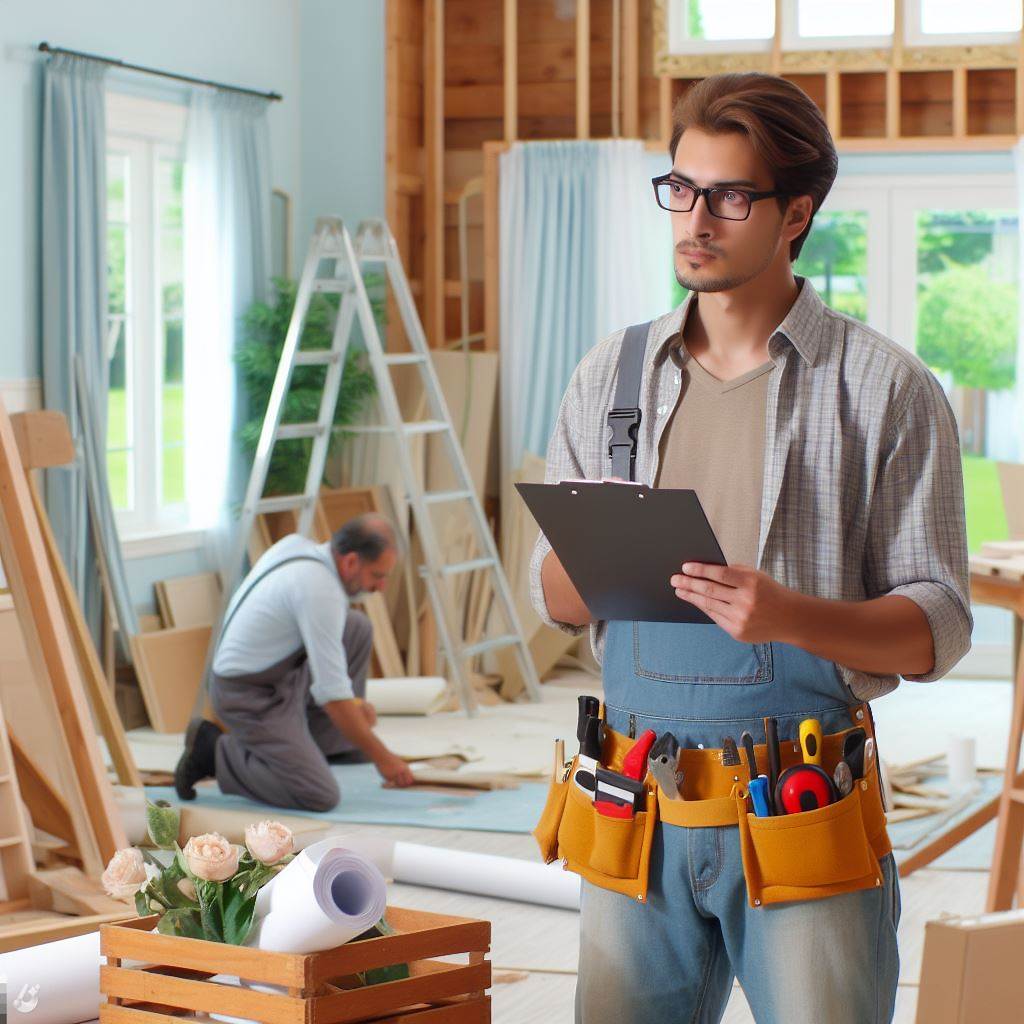Introduction
Mixed-use properties refer to developments that incorporate various types of uses, such as residential, commercial, and retail spaces, within a single project.
They have gained increasing significance in urban planning due to their potential to create vibrant and sustainable communities.
Currently, mixed-use properties are experiencing a surge in popularity as they offer numerous benefits.
They promote walkability, reduce commuting times, and enhance the overall quality of life for residents.
Moreover, they create economic opportunities and contribute to the revitalization of urban areas.
The purpose of this blog post is to delve into the future prospects of mixed-use properties.
By examining emerging trends, technological advancements, and changing consumer demands, we will explore how these properties are likely to evolve in the coming years.
Additionally, we will discuss the potential challenges they may face and possible solutions to overcome them.
In the subsequent sections, we will analyze key factors shaping the future of mixed-use properties, including sustainability, flexible spaces, and the integration of digital technologies.
By exploring these aspects, we aim to provide insights into the exciting possibilities that lie ahead and the importance of adapting to meet the evolving needs of communities.
Stay tuned for the following sections as we uncover the exciting future of mixed-use properties and the potential they hold for creating vibrant, sustainable, and inclusive environments for generations to come.
Evolution of Mixed-Use Properties
Historical background of mixed-use properties
Mixed-use properties have a rich historical background, dating back to ancient civilizations.
These early mixed-use properties were often found in bustling markets, where residential, commercial, and social activities coexisted.
In medieval Europe, mixed-use properties were common in city centers, with shops on the ground floor and living spaces above.
However, with the rise of industrialization, cities became more specialized, and mixed-use properties declined.
Transform Your Real Estate Decisions
Unlock personalized real estate insights crafted just for you. Get actionable advice designed to amplify your success.
Get StartedFactors driving the evolution of mixed-use properties
Changing consumer preferences
Modern consumers are seeking convenience, walkability, and diverse experiences in their daily lives.
Mixed-use properties cater to these preferences by providing a variety of amenities, such as retail, restaurants, and entertainment options within walking distance.
Additionally, people are increasingly valuing a sense of community and the opportunity to live, work, and play in the same neighborhood.
Urbanization and sustainable development
As urbanization continues, cities are becoming denser, and land availability is limited.
Mixed-use properties allow for efficient land use, maximizing the potential of limited space and reducing sprawl.
This compact development model also promotes sustainable transportation options, as residents can easily access amenities without relying heavily on cars.
Economic advantages for developers
Developers are recognizing the economic benefits of mixed-use properties.
Combining different property types allows for higher rental yields and increased asset value.
Furthermore, mixed-use developments can generate a built-in customer base, as residents often become customers of the on-site businesses.
The flexibility of mixed-use properties also allows developers to adapt to changing market demands and trends.
In essence, mixed-use properties have evolved over time due to changing consumer preferences, urbanization, and economic advantages for developers.
These properties offer a unique blend of convenience, community, and sustainability, making them a promising option for the future of real estate.
Read: Maximizing ROI in Property Flips
Benefits and Advantages of Mixed-Use Properties
Enhanced Livability and Quality of Life
A mixed-use property combines residential, commercial, and recreational spaces, enhancing the overall livability for residents.
Showcase Your Real Estate Business
Publish your company profile on our blog for just $200. Gain instant exposure and connect with a dedicated audience of real estate professionals and enthusiasts.
Publish Your ProfileIt provides a direct solution to the challenges of urban living, where convenient access to daily needs is of utmost importance.
With amenities such as grocery stores, fitness centers, and parks within walking distance, residents can save time and effort, resulting in a higher standard of living.
The coexistence of various activities in one location creates a vibrant and dynamic community, fostering a sense of belonging and social connection.
Increased Walkability and Reduced Dependency on Cars
Mixed-use properties prioritize walkability, offering an alternative to car-dependent lifestyles.
The layout of these developments is designed to minimize distances between residential units and essential services.
By encouraging walking, it not only promotes healthier habits but also reduces traffic congestion and air pollution.
Residents can enjoy the benefits of physical activity, improved mental health, and a cleaner environment.
Synergies and Economic Viability
The blend of residential and commercial spaces in mixed-use properties creates synergies that benefit both residents and businesses.
The presence of a diverse range of businesses within the development attracts customers from both within and outside the community.
This generates economic growth, increases job opportunities, and strengthens the local economy.
Furthermore, mixed-use properties often become destinations in themselves, attracting visitors and contributing to the overall liveliness and prosperity of the area.
Sustainability and Environmental Considerations
Mixed-use properties play a crucial role in promoting sustainability and reducing environmental impact.
By integrating residential and commercial spaces, they reduce the need for long commutes, resulting in reduced greenhouse gas emissions from transportation.
The proximity of amenities encourages the use of public transportation, further minimizing reliance on individual cars.
Additionally, the efficient use of land in mixed-use developments helps combat urban sprawl, preserving green spaces and fostering a healthier, more sustainable living environment.
In summary, mixed-use properties offer numerous benefits and advantages.
They enhance the livability and quality of life, increase walkability, create synergies and economic viability, and contribute to sustainability and environmental considerations.
As urban areas continue to grow and evolve, mixed-use properties present a sustainable and innovative solution that caters to the diverse needs of residents while revitalizing and enriching communities.
Current Trends in Mixed-Use Developments
Integration of smart technology and data-driven management
Mixed-use developments are increasingly embracing smart technology and data-driven management systems.
This integration allows for enhanced efficiency, improved user experiences, and cost savings.
One key trend is the utilization of smart building automation systems.
These systems enable centralized control and monitoring of various building functions such as lighting, temperature, security, and energy usage.
In addition, developers are incorporating advanced data analytics to optimize the performance of mixed-use properties.
This includes using real-time data to analyze foot traffic, occupancy rates, and energy consumption.
By leveraging this information, property managers can make informed decisions to maximize the overall efficiency and sustainability of the development.
Incorporation of green spaces and recreational amenities
In response to the growing focus on sustainability and wellness, mixed-use developments are prioritizing the integration of green spaces and recreational amenities.
Green spaces, such as parks, gardens, and rooftop terraces, not only provide aesthetic appeal but also contribute to the overall well-being of residents and users.
These areas offer opportunities for relaxation, social interaction, and physical activity, promoting a healthy and balanced lifestyle.
Moreover, developers are incorporating sustainable design elements, such as rainwater harvesting systems and green roofs, to minimize the environmental impact of mixed-use properties.
These features not only enhance the overall sustainability of the development but also contribute to the surrounding ecosystem by improving air quality and reducing urban heat island effect.
Showcase Your Real Estate Business
Publish your company profile on our blog for just $200. Gain instant exposure and connect with a dedicated audience of real estate professionals and enthusiasts.
Publish Your ProfileBlurring boundaries between residential, commercial, and cultural spaces
Another prevailing trend in mixed-use developments is the blurring of boundaries between residential, commercial, and cultural spaces.
Traditionally, these sectors were developed separately, leading to disconnected neighborhoods and limited interaction between residents, workers, and visitors.
However, contemporary mixed-use developments are reimagining the urban landscape by integrating these functions within the same space.
By blurring these boundaries, mixed-use properties create vibrant communities where individuals can live, work, and play in close proximity.
This enhances convenience, encourages social interaction, and fosters a sense of belonging.
Embracing the concept of “live-work-play”
The concept of “live-work-play” is becoming a cornerstone of modern mixed-use developments.
This approach seeks to provide a comprehensive and integrated lifestyle experience for residents and users.
In these developments, not only do people have their homes, but they also have the opportunity to work and engage in recreational activities within the same vicinity.
This eliminates the need for long commutes, promotes a better work-life balance, and enhances overall quality of life.
Mixed-use properties embracing the “live-work-play” concept often feature coworking spaces, on-site amenities such as gyms and spas, retail stores, entertainment venues, and dining options.
These diverse offerings create a dynamic environment that caters to the various needs and preferences of the community.
In fact, current trends in mixed-use developments revolve around the integration of smart technology and data-driven management, incorporation of green spaces and recreational amenities, blurring boundaries between residential, commercial, and cultural spaces, and embracing the concept of “live-work-play.”
These trends reflect the changing demands and aspirations of individuals seeking convenient, sustainable, and interconnected urban environments.
By embracing these trends, developers can create mixed-use properties that cater to the evolving needs of the communities they serve.
Read: Maximizing Instagram for Real Estate Agent Success
Challenges and Concerns for Mixed-Use Properties
Zoning regulations and legal complexities
Mixed-use properties often face challenges with zoning regulations that restrict or limit their development.
Cities have different rules and regulations regarding the acceptable mix of residential, commercial, and other uses.
Developers must navigate through complex legal processes and obtain necessary permits and approvals for their projects.
Zoning variances and code compliance can cause delays and increase costs for mixed-use development.
Potential gentrification and social equity issues
Mixed-use properties can lead to gentrification, where lower-income residents are displaced due to rising property values.
Gentrification can result in social equity issues, with marginalized communities being pushed out of their neighborhoods.
Developers and city planners need to ensure that mixed-use projects consider the needs and concerns of existing residents.
Affordable housing provisions and community engagement strategies can help mitigate negative impacts of gentrification.
Infrastructure and transportation demands
Mixed-use properties can put additional strain on existing infrastructure and transportation networks.
Increased population density from mixed-use developments can lead to congestion and inadequate public transportation.
Adequate planning for parking spaces, pedestrian walkways, and cyclist-friendly infrastructure is crucial to address these challenges.
Collaboration with local government and transportation agencies is necessary to develop sustainable transportation solutions.
Balancing the needs and interests of different stakeholders
Mixed-use properties involve various stakeholders with different interests, such as developers, residents, and local business owners.
Developers need to balance the financial viability of their projects while meeting the preferences and demands of the community.
Engaging stakeholders early in the planning process helps foster a sense of ownership and enables better decision-making.
Showcase Your Real Estate Business
Publish your company profile on our blog for just $200. Gain instant exposure and connect with a dedicated audience of real estate professionals and enthusiasts.
Publish Your ProfileOpen dialogue and collaboration can lead to win-win solutions that satisfy the diverse needs of stakeholders involved.
In short, mixed-use properties face several challenges and concerns that must be addressed to ensure successful development.
Zoning regulations and legal complexities, potential gentrification and social equity issues, infrastructure and transportation demands, and the need to balance the interests of different stakeholders are among the critical aspects that require attention.
By carefully navigating these challenges, mixed-use properties can contribute to vibrant and inclusive communities in the future.
Read: Historic Homes: Renovate or Rebuild?

Future Outlook for Mixed-Use Properties
Anticipated growth and expansion of mixed-use developments
Mixed-use properties have gained significant popularity in recent years and are expected to experience substantial growth and expansion in the future.
This is driven by the increasing demand for vibrant, convenient, and sustainable urban living spaces.
Innovation and technological advancements in architecture and design
The future of mixed-use properties will be shaped by innovation and technological advancements in architecture and design.
Cutting-edge techniques and materials will be used to create visually stunning and functional spaces that cater to the evolving needs of residents and businesses.
Integration of sustainability and renewable energy solutions
Sustainability will play a crucial role in the future of mixed-use properties.
Developers will prioritize integrating sustainable features such as green roofs, rainwater harvesting, and energy-efficient systems.
Additionally, renewable energy solutions like solar panels and wind turbines will be extensively incorporated to reduce the carbon footprint of these developments.
Collaboration between public and private entities to optimize mixed-use spaces
To fully optimize mixed-use spaces, collaboration between public and private entities will be essential.
Governments and developers will work together to create well-planned communities that seamlessly merge residential, commercial, and recreational areas.
This collaboration will ensure the efficient allocation of resources and the creation of vibrant and cohesive neighborhoods.
Enhanced amenities and services within mixed-use properties
The future of mixed-use properties will see an emphasis on providing enhanced amenities and services to residents and tenants.
These properties will feature state-of-the-art fitness centers, community spaces, recreational areas, and modern retail options.
The aim is to create a self-contained environment where individuals can live, work, and play without the need to commute extensively.
Embracing the concept of “live-work-play” in mixed-use properties
The concept of “live-work-play” will become more prevalent in future mixed-use developments.
The goal is to create a balanced lifestyle where residents can live close to their workplaces, enjoy recreational activities within the vicinity, and have easy access to dining, shopping, and entertainment options.
This integration will enhance convenience and reduce the reliance on traditional transportation methods.
Creating walkable and pedestrian-friendly mixed-use communities
Walkability and pedestrian-friendly designs will be prominent features of future mixed-use developments.
Sidewalks, bike lanes, and green spaces will be prioritized to encourage active transportation and promote a sense of community.
The design will focus on creating safe and enjoyable environments for residents, workers, and visitors.
Rise of smart and connected mixed-use properties
With the advent of the Internet of Things (IoT), mixed-use properties will be transformed into smart and connected environments.
Residents will have access to advanced technologies that optimize energy consumption, enhance security measures, and enable seamless communication.
These developments will be at the forefront of the digital revolution, providing residents with a technologically advanced living experience.
Adaptation to changing demographics and lifestyles
Future mixed-use properties will need to adapt to changing demographics and lifestyles.
As the population ages and millennials become a dominant market segment, developers must cater to their specific needs.
This includes incorporating age-friendly design elements, flexible workspaces, and amenities that promote social interaction and community engagement.
Showcase Your Real Estate Business
Publish your company profile on our blog for just $200. Gain instant exposure and connect with a dedicated audience of real estate professionals and enthusiasts.
Publish Your ProfileContinuous evolution and flexibility in mixed-use property design
The future of mixed-use properties relies on continual evolution and flexibility in design.
Developers must be adaptable to changing market trends and ensure that their properties remain relevant and appealing.
The ability to repurpose spaces and accommodate new businesses or services will be crucial for long-term success.
In general, the future of mixed-use properties is promising, with anticipated growth, technological advancements, sustainability integration, and collaboration between public and private entities.
These developments will provide enhanced amenities, prioritize walkability, embrace the concept of “live-work-play,” and adapt to changing demographics and lifestyles.
By staying innovative and flexible, mixed-use properties will continue to thrive and offer vibrant and cohesive communities for residents and businesses.
Read: 2024 Real Estate Trends: What’s New?
Conclusion
Recap of the main points discussed
In this exploration of mixed-use properties, we delved into their dynamic nature, blending residential, commercial, and recreational spaces.
Our focus was on their transformative impact on urban landscapes.
We navigated the benefits, from increased walkability to fostering vibrant communities.
Recognizing mixed-use properties as catalysts for economic growth, we highlighted their role in creating a sustainable urban environment.
The case studies illustrated the adaptive nature of these spaces, responding to changing societal needs.
Whether through repurposing old factories or revitalizing neglected areas, mixed-use developments emerge as powerful agents of urban revitalization.
Positive outlook for the future of mixed-use properties
Looking ahead, a promising horizon unfolds for mixed-use properties.
The ongoing trend towards urbanization aligns perfectly with the versatility and efficiency these spaces offer.
The demand for integrated living and working environments continues to rise.
Cities embracing mixed-use development witness not only economic prosperity but also enriched community experiences.
As technology advances, smart infrastructure integration further enhances the functionality of these spaces, creating smart, interconnected hubs.
Investors, city planners, and developers should recognize the resilience and adaptability of mixed-use properties.
Their ability to weather economic shifts positions them as stable, long-term investments.
The future promises a landscape where mixed-use properties seamlessly integrate into the fabric of urban life.
Call to action for further research and exploration of mixed-use development opportunities
As we conclude, the call to action echoes loud and clear.
Researchers, urban planners, and policymakers must continue exploring mixed-use development opportunities.
This requires a collaborative effort to refine strategies, policies, and design principles that align with the evolving needs of our dynamic urban societies.
In the quest for sustainable, livable cities, mixed-use properties stand as beacons of innovation.
Let this be an invitation to delve deeper, to invest time and resources in unlocking the full potential of mixed-use developments.
The future of our cities is intertwined with the success and evolution of these multifaceted spaces.




